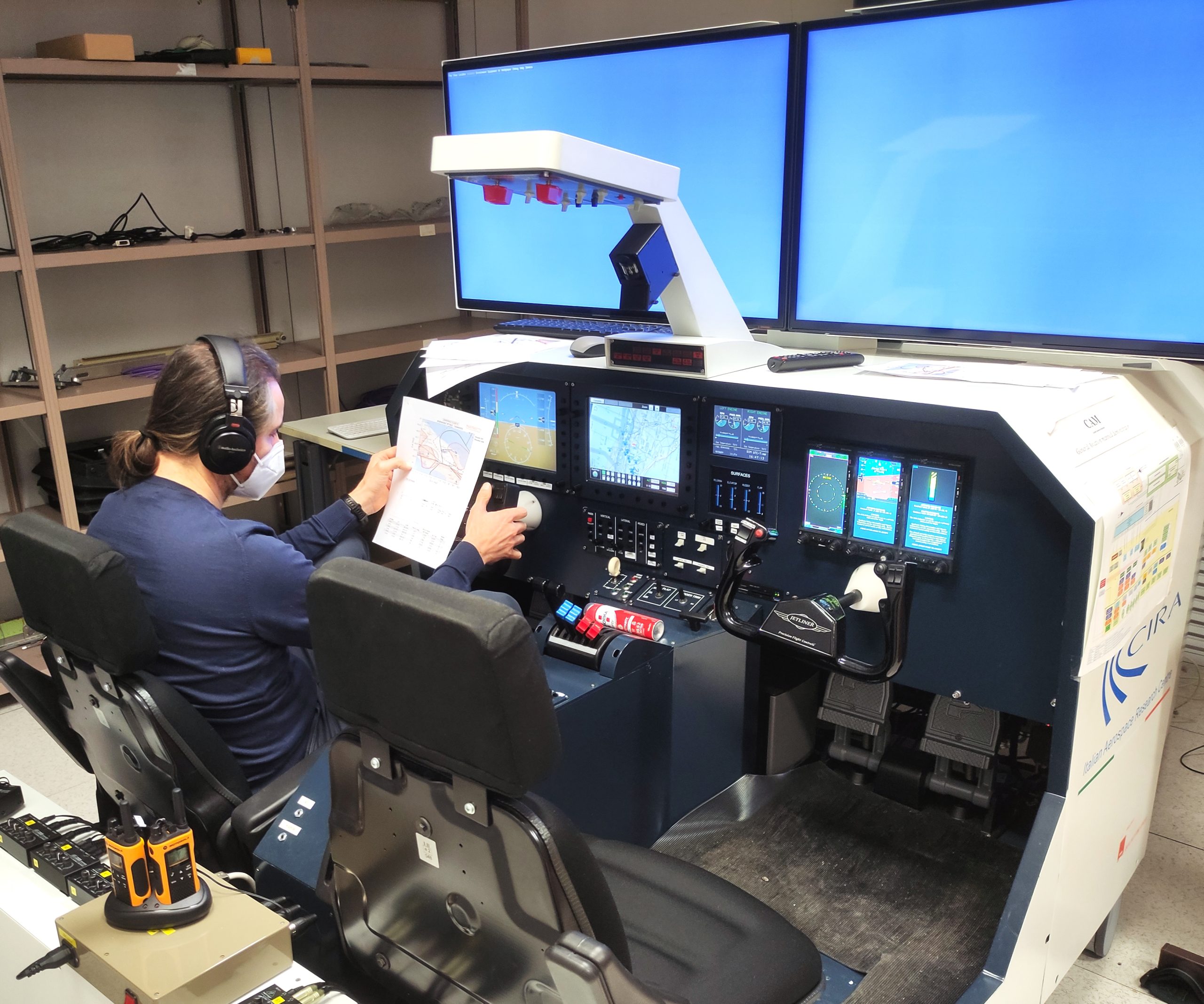During the week from 21st to 25th of March 2022, the URClearED project executed the first out of three Real Time Simulation (RTS) Campaigns on a Remain Well Clear (RWC) prototype for airspace classes D to G, jointly developed by CIRA (algorithm) and DLR (Human Machine Interface).
The first RTS Campaign was organized by CIRA, also Coordinator of the URClearED Project; after the realization of the validation exercises, we interviewed the team to tell us more about those days and their first feedback, before proceeding with the results analysis. Here below their answers to our questions.
Which was the purpose of this first campaign of Real Time Simulations? Could you please tell us more details about it?
“The general objective of this first campaign was to get feedback by UAS remote pilots and controllers on the usefulness of a RWC function in airspace classes D to G.
This first RTS campaign has been executed in Capua at CIRA’s laboratories, using six real time simulators:
- a Traffic Scenario Generator;
- a Controller Working Position;
- two pseudo-pilot stations;
- a Tactical Unmanned Vehicle Simulator (having the RWC function installed);
- a General Aviation aircraft.
The simulators were interconnected through voice and data links so as to virtually reproduce actual operating conditions”.
How about the exercises and the scenarios used for testing the RWC?
“A total of 17 tests were performed in about 9 hours of simulation time in different scenarios encompassing airspace classes D to G for a fixed wing tactical unmanned vehicle.
The scenarios have been located in Italy close to Bari, Brindisi and Grottaglie airports and have been performed by 5 different controllers (4 Italian and 1 from Switzerland), 3 experimental pilots, 3 human factors experts and 8 system and avionic engineers. Many encounters have been tested in realistic conditions resulting in several GB of data, videos and pilot/controller feedbacks/suggestions”.
What kind of first feedback comments did you receive from pilots and controllers participating in the simulations?
“First comments both by pilots and controllers were about the RWC function providing actual added value with respect to the ATCO information in all tested airspace classes D-E-G. However, everybody noted that RWC procedures should be clearly defined and the Remote Pilots should be adequately trained to use them, before the new tool can be effectively adopted in the real-life”.
When will the results be processed and available to the public?
“Detailed analysis of the results will be performed in the next weeks and made available in June this year. We will disseminate them through our website and LinkedIn mainly.
But first, we need to wait for the next two RTS campaigns, which will be at DLR (using mainly a rotorcraft unmanned vehicle) and again at CIRA (using a Medium Altitude Long Endurance unmanned vehicle) experimental centers, from 12th to 14th of April.
So stay tuned, follow us here and on LinkedIn and be ready to be involved in the URClearED team’s journey!”.

